French numbers 1 to 1000 – Learn to Count in French
Learn French numbers 1 to 1000 with clear pronunciation and examples. Perfect for English speakers learning French!
6/25/20252 min read
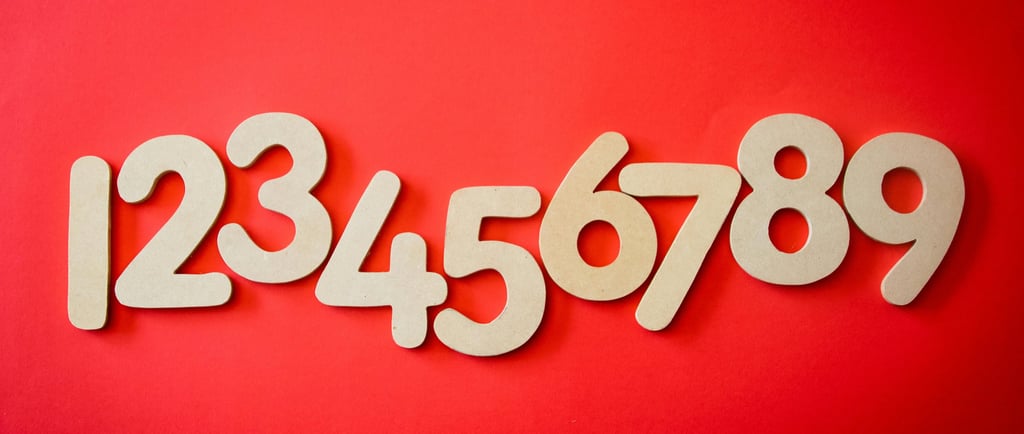

In this lesson, we will explore the French numbers, starting from the basics, such as counting from 1 to 10, to more complex concepts like tens, hundreds, and beyond.
Numbers in French can seem a bit tricky at first. However, by understanding them well and repeating them several times over a few days, you'll find that it becomes easier over time.
De 0 à 9
Please note that numbers have a specific pronunciation, which is quite different from how they are written.
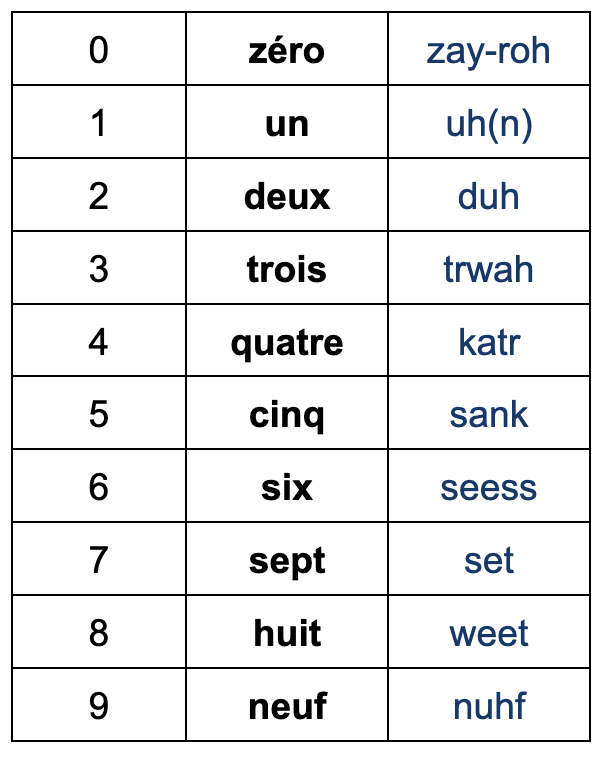

De 10 à 19
From 10 to 16, you need to memorize the numbers because they each have their own unique names. However, from 17 onwards, you can simply read the two digits separately. For example, 17 is pronounced as "dix-sept" (ten-seven), 18 as "dix-huit" (ten-eight), and so on.
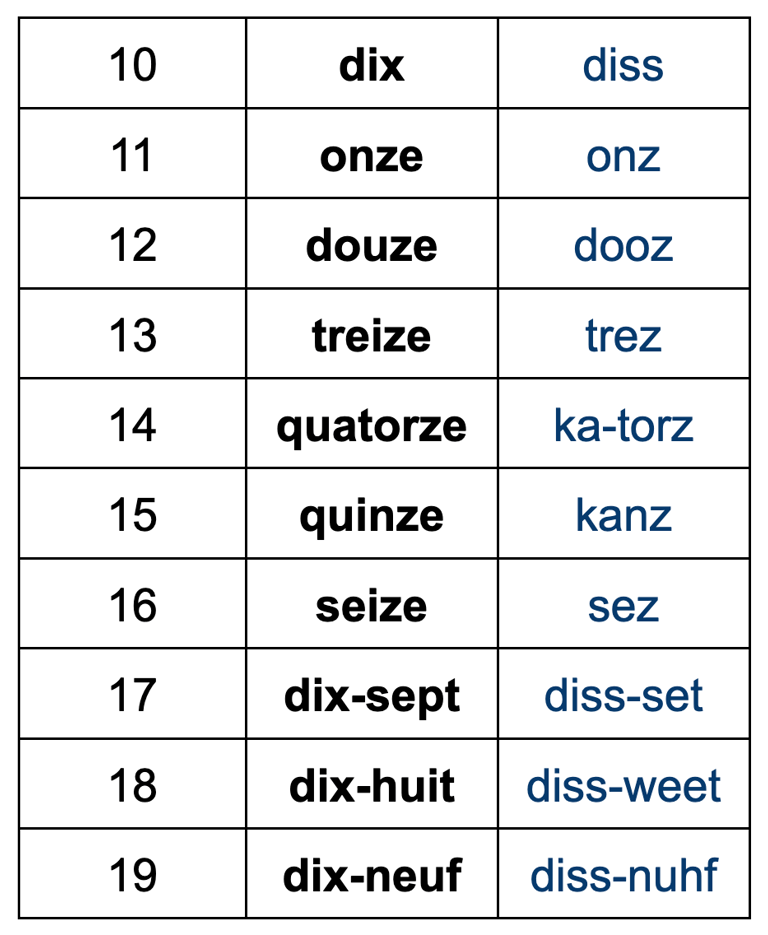

De 20 à 69
The rest is simpler. You only need to learn each multiple of ten from 20 to 60.
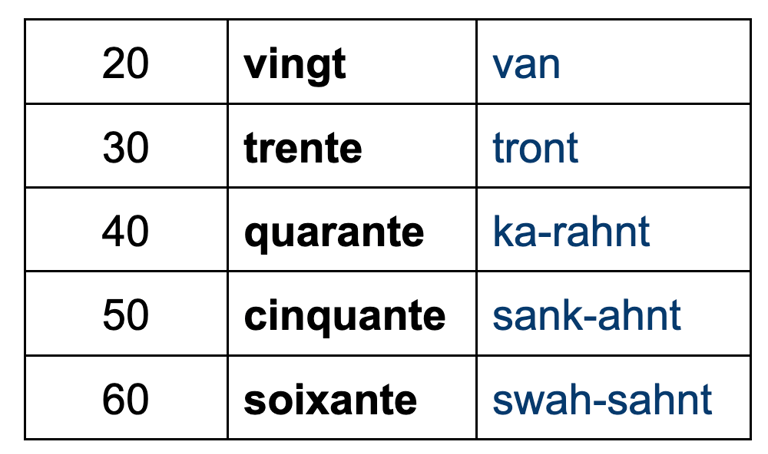

And after that? You just need to read 22 : "twenty-two" : vingt-deux
Note that for 21, 31, 41, 51, and 61, you must add "and" between the tens and the units.
For example : 21 is "vingt-et-un"

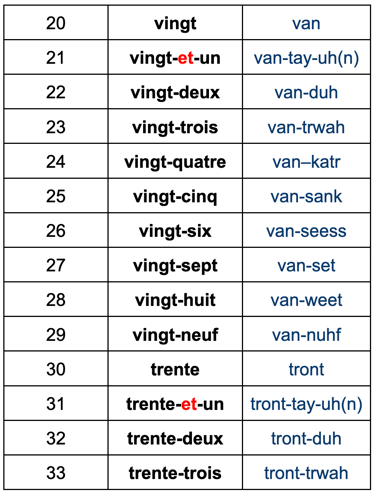
The number 80 is expressed as "quatre-vingts," which translates to "four twenties." (4*20)
De 69 à 99
Why did we stop at 69? From there, the rules become a bit crazy.
Starting from 70, instead of saying "septante," we continue counting from "soixante" (sixty).
After "soixante-neuf" (69), we say "soixante-dix" (60+10 = 70), followed by "soixante et onze" (60+11 = 71), "soixante-douze" (60+12 = 72), and so on.
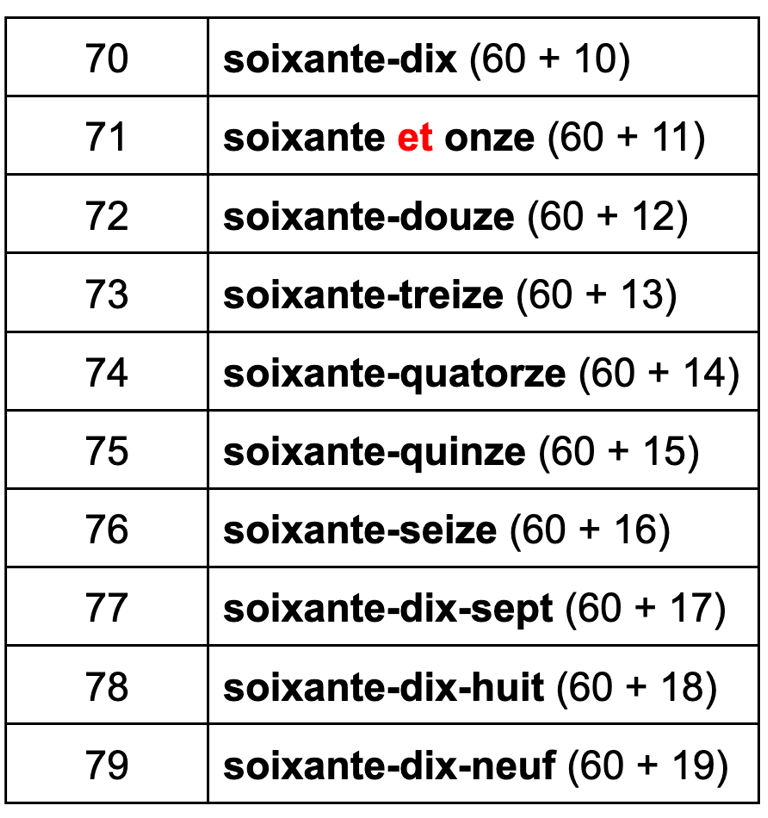

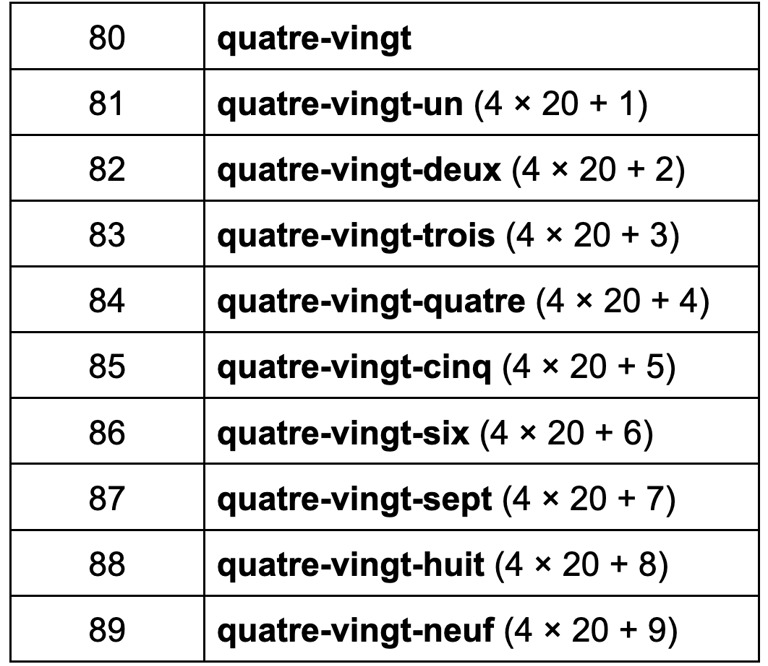




Just like with 70, with 90 we continue counting from 80, so 80+10, 80+11.
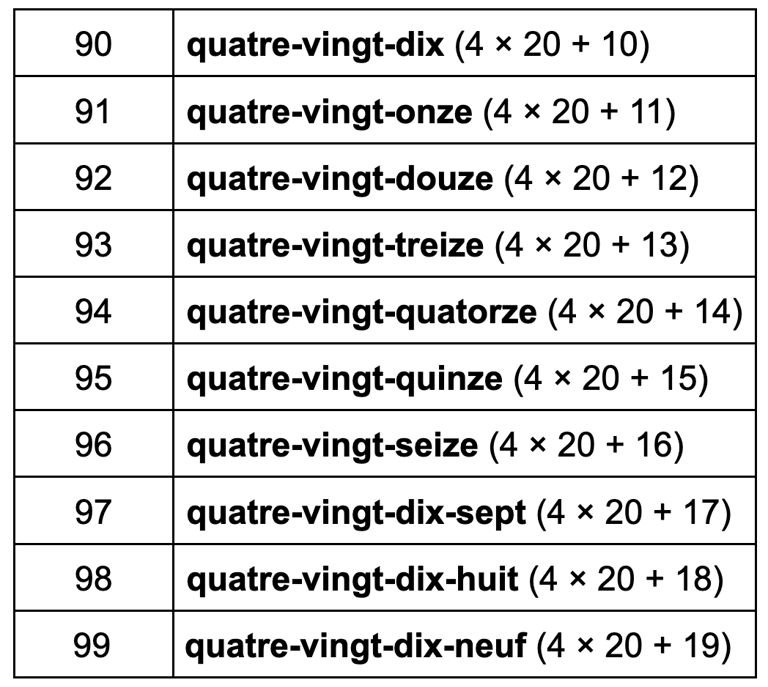


Ready to Experience a Different Way to Learn French?
Let's start with a free discovery session where we can discuss your goals and see if my method is right for you.
© 2025. All rights reserved.
